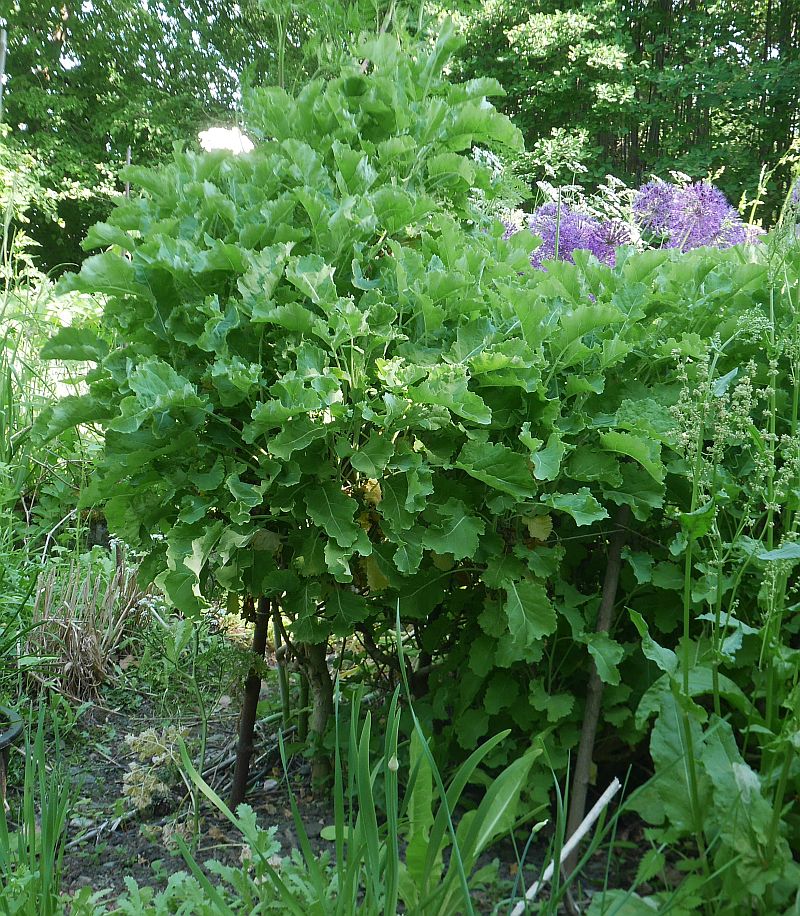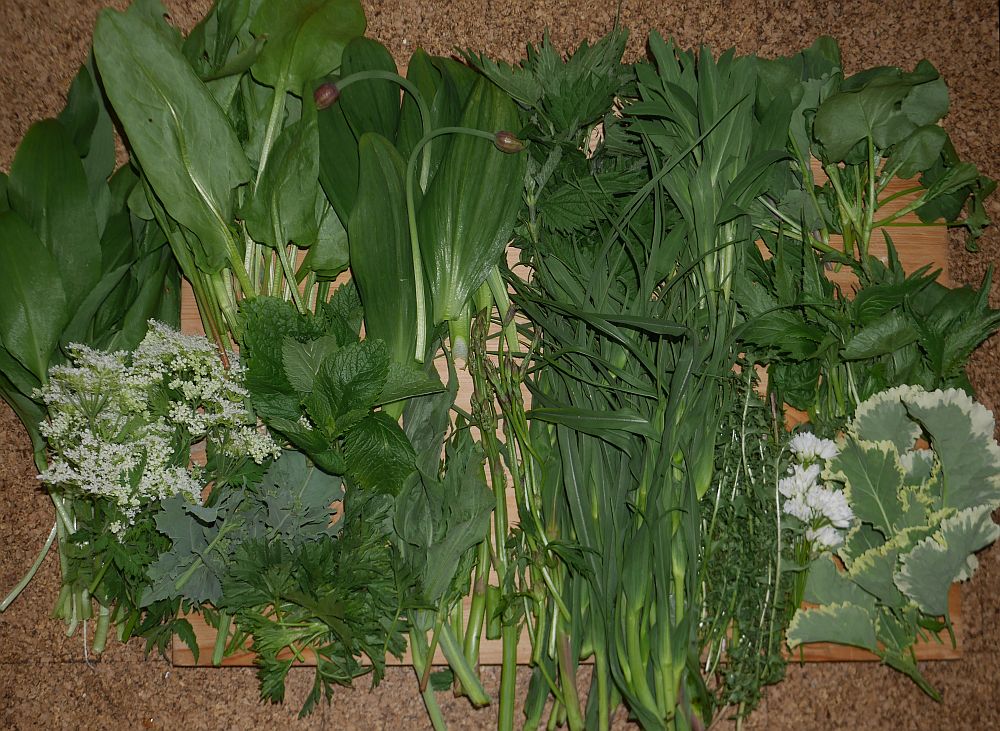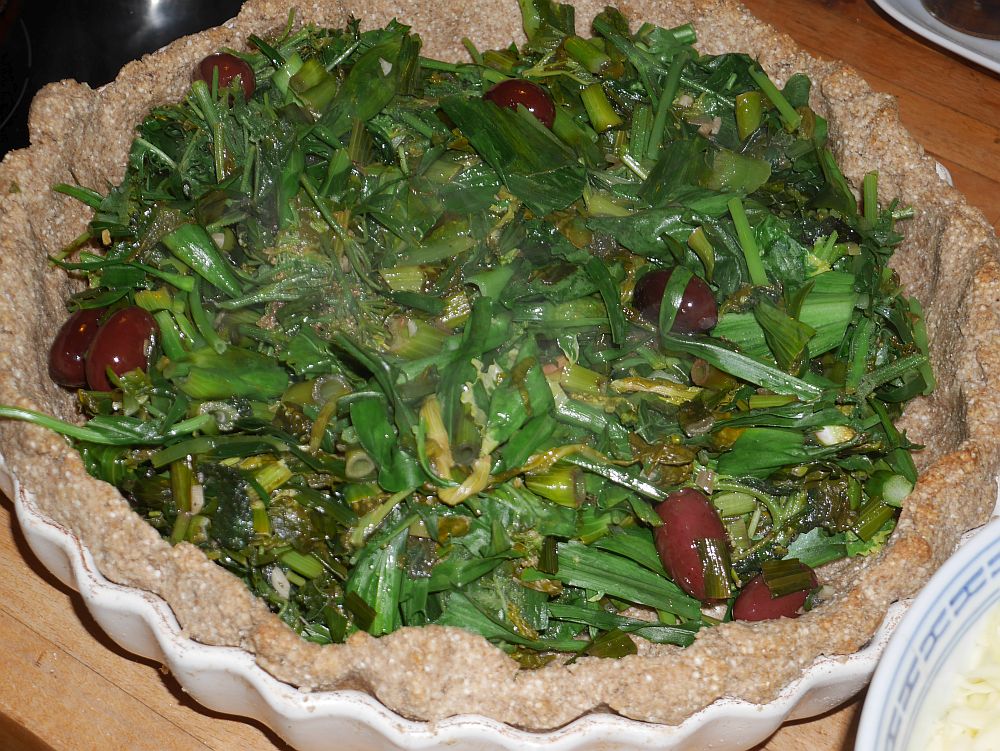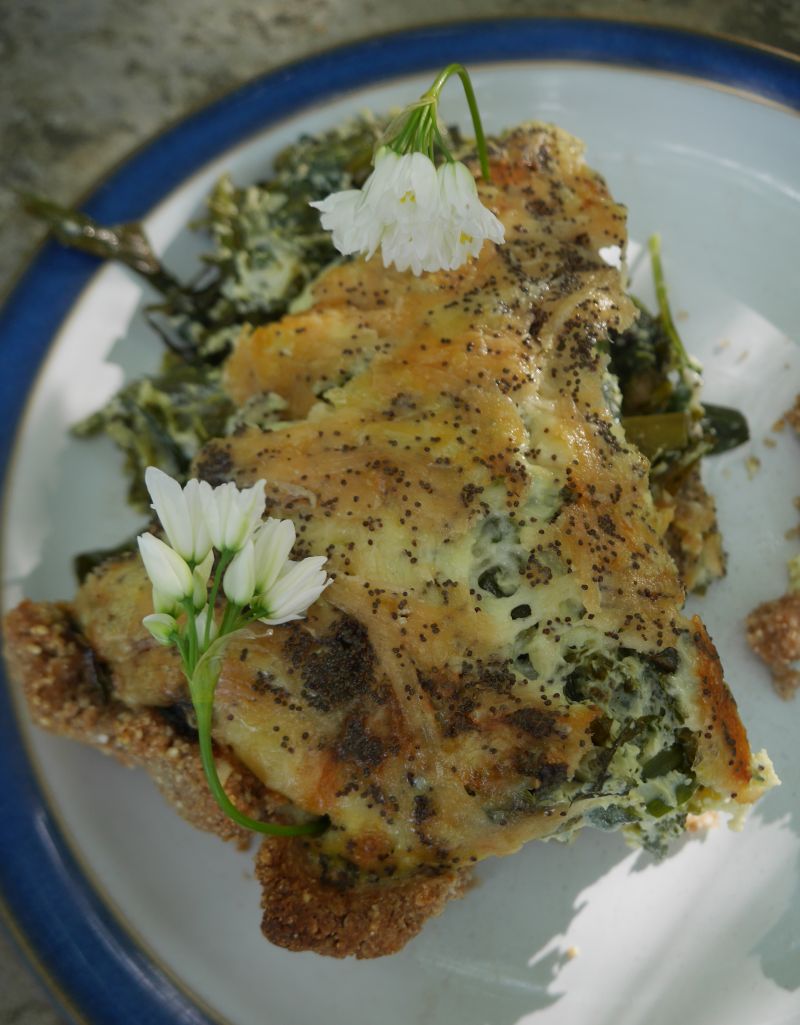The perennial kales overwintered well the last two winters and are looking good. I showed a video of one I got from Walsall Allotments in Birmingham, UK a few years ago here last week: https://www.edimentals.com/blog/?p=25787
The first below is one of Chris Homanics’ perennial crosses (I lost track of which cross this is). It has large dark glossy leaves (a bit reminiscent of Glazed collards) and hasn’t flowered, concentrating instead its energy into producing leaves! This is a keeper.
This is followed by non-flowering offspring of my Daubenton cross with Purple Sprouting Broccoli in 2012 and still alive https://www.edimentals.com/blog/?page_id=1632. These have inherited the daubenton genes but one is taller and has bigger leaves. I’m still playing with the offspring on the broccoli side, but they are less perennial but some have survived for 5 years but the broccolis are smaller than the father, but still useful.
Finally is a current picture of Daubenton variegated.
AND Diamond back moth (kålmøll) is now here in large numbers (over 100) and will have almost no impact on these kales, nor will other pests!
1. Homanics Norway perennial kale

2. Daubenton like (from Daubenton x Late Purple Broccoli cross)

3. Daubenton variegated

I’m more and more convinced that perennial kales are the way forward. After two mild winters I’ve had good overwintering of most varieties except Tree Collards from California.
The film below shows a kale which I call “Walsall Allotments” which I found growing at Walsall Allotments in Birmingham (see https://www.edimentals.com/blog/?page_id=2868) on the allotment of a Kenyan man. I never managed to find out where he got these kale from, but Kenya is the only country was the only country where perennial kales were still grown commercially at the time I was researching my book. At the end of the video we see another perennial Brassicaceae, sea kale (strandkål) Crambe maritima. Note that the variety Lily White flowers significantly earlier than my other varieties.

A few days ago the plague of Brassica growers, diamond back moth (kålmøll) arrived in significant numbers here and I see on various FB groups that folk are using floating mulch and enviromesh to protect their crops. I had done the same for years, but decided that I wanted to grow vegetables without non-sustainable oil based products like Agryl fleece which is no doubt also a major source of plastic fibres in nature. Agryl is also used to bring on annual crops earlier. However, there is an alternative plastic free and sustainable alternative using perennials. As you can see, my kales having grown for two and a half months are large and have been providing kale leaves since early spring. Their main growth period is now over but will be resumed in autumn. Although diamond back moths and other butterflies lay their eggs on these kales damage isn’t significant. Therefore I am totally unworried by this invasion of moths!
Of course there are problems with perennial kales too, such as cold hardiness, deer and woodpigeons (rådyr / ringduer) in the winter and lack of diversity, but breeding projects by amateurs such as Chris Homanics in Oregon are changing all that!
AROUND THE WORLD IN THE EDIBLE GARDEN; Part 3 – Southern Europe and the Mediterranean countries
Inviting you to the third in a series of dinners from Malvik’s Edible Garden where we “forage” from different parts of the world!
If you’ve visited countries in south east Europe you will no doubt have eaten the delicious vegetable pies like Greek spanakopoita, Turkish börek, Italian Torta pasqualina, Bulgarian banitsa and others. Inspired by these and not wanting to make the time consuming to make filo pastry, we made a 100% wholegrain rye/barley quiche like dish with large quantities of the following perennial greens:

From left to right (from top left) :
Allium ursinum (ramsons; ramsløk)
Rumex patientia (patience dock; hagesyre)
Urtica dioica (stinging nettle; brennesle)
Silene vulgaris (bladder campion; engsmelle)
Rumex scutatus (Buckler-leaved sorrel; Fransksyre)
Rumex acetosa (sorrel; engsyre)
Myrrhis odorata (sweet cicely; Spansk kjørvel)
Malva alcea (hollyhock mallow; rosekattost)
Melissa officinalis (lemon balm; sitronmelisse)
Scorzonera hispanica (Scorzonera; scorsonnerot, svartrot)
Asparagus officinalis (asparagus; asparges)
Humulus lupulus (hops; humle)
Tragopogon pratensis (Jack-go-to-bed-at-noon; geitskjegg)
Taraxacum “Moss-leaved dandelion”
Campanula trachelium (nettle-leaved bellflower; nesleklokke)
Brassica oleracea “Daubenton variegated” (perennial kale; flerårige kål)
Allium zebdanense (white flowers) from Lebanon
(with garlic and chili and imported olives)
Perennial vegetables, Edimentals (plants that are edible and ornamental) and other goings on in The Edible Garden










